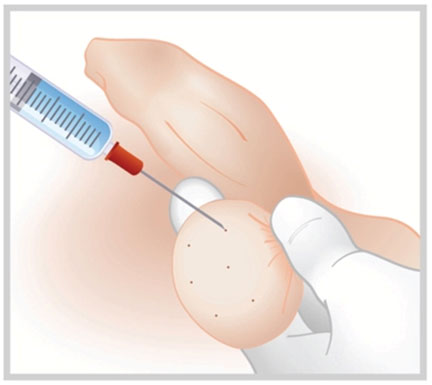Testicular Tissue Freezing
Pooyesh Fertility Clinic
Testicular Tissue Freezing
Testicular tissue freezing is one of the most advanced fertility preservation methods for men, particularly in cases where freezing mature sperm is not possible.
This sophisticated yet effective technique offers new hope for many patients—especially men undergoing cancer treatment, or those whose fertility is at risk due to autoimmune diseases or premature testicular failure.
Benefits of Testicular Tissue Freezing
- Fertility preservation: Freezing a biopsy sample of testicular tissue enables men to preserve their fertility for future use.
- Increased chance of conception: In the future, mature sperm can be retrieved from the frozen tissue and used for in vitro fertilization (IVF) or other assisted reproductive techniques.
- Prevention of infertility: This method can help men at high risk of infertility maintain their chances of fathering biological children in the future.
Steps of the Testicular Tissue Freezing Process
- 1 Initial assessment and consultation
- 2 Tissue sampling in the operating room under general or spinal anesthesia, performed via TESE or Micro-TESE technique
- 3 Laboratory processing of the tissue sample
- 4 Cryopreservation in special liquid nitrogen storage tanks at -196°C
Applications of Testicular Tissue Freezing
- Cancer patients: Men undergoing cancer treatment may lose fertility as a result of chemotherapy or radiotherapy. Freezing a testicular biopsy before treatment preserves their reproductive potential.
- Patients with autoimmune diseases: Conditions such as lupus can damage the testes and impair fertility. Freezing testicular tissue offers a way to safeguard future reproductive options.
- Premature testicular failure: Early loss of testicular function can lead to infertility. Cryopreserving testicular tissue helps protect fertility in such cases.
Who Typically Needs This Procedure?
This method is mainly indicated for:
- Prepubertal boys requiring cancer treatment or other therapies harmful to the testes
- Adult men with no sperm present in their semen
- Patients for whom standard sperm retrieval methods are not possible
Post-Operative Care After Testicular Biopsy
- Begin a liquid diet 6 hours after surgery, progressing to a normal diet if tolerated.
- Wear snug-fitting underwear for 2 weeks.
- Remove the dressing and shower 48 hours after surgery; no further dressing is required unless there is discharge, in which case a sterile gauze may be applied.
- Contact your doctor in case of severe swelling, significant bleeding, or fever with chills.
- Stitches are absorbable and do not require removal.
- Sexual activity may be resumed 1 week after surgery.
- Visit the andrology laboratory the day after surgery to follow up on biopsy results.
- Attend your surgeon’s office 1 week after the procedure.
Potential Risks and Complications
While testicular tissue freezing is generally safe, potential risks include:
- Biopsy-related complications: Bleeding, infection, pain, or discomfort at the surgical site
- Hormonal side effects: Hot flashes, mood changes, and possible weight gain

